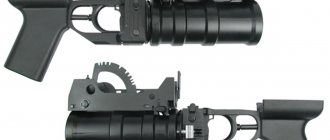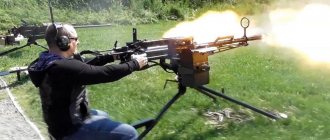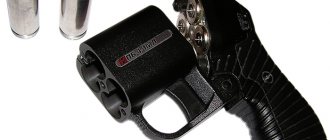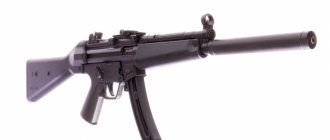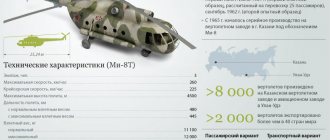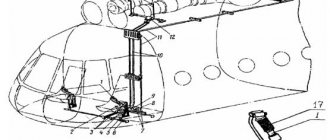This article is about the diesel locomotive. For the aircraft, see Tu-2.
| TU2 | |
| TU2 on the Kharkov Children's Railway (Ukraine) | |
| Production | |
| Country of construction | USSR |
| Factory | Kaluga Machine-Building Plant |
| Years of construction | 1955-1958 |
| Total built | 281 |
| Technical data | |
| Type of service | Mainline: cargo and passenger |
| Axial formula | 2O-2O |
| Full Service Weight | 32 t |
| Load from moving axles on rails | 8 t |
| Locomotive length |
|
| Maximum height | 3470 mm |
| Width | 2450 mm[1] |
| Track width | 750 mm |
| engine's type | Diesel (1D12) |
| Engine power | 195 kW |
| Transmission type | Electric |
| Design speed | 50 km/h |
| Exploitation | |
| A country | USSR (Russia, Ukraine, Belarus, Estonia, Latvia, Lithuania, Uzbekistan, Kazakhstan, Armenia, Azerbaijan) |
| Media files on Wikimedia Commons | |
TU2
— diesel locomotive, “
Low
diesel
locomotive , type two,” four-axle serial freight-passenger diesel locomotive, with direct current electric transmission, for mainline operation on railways, 750 mm gauge, Ministry of Railways of the USSR.
History of creation
In the early 1950s, a need arose for a new narrow-gauge diesel locomotive, designed primarily to operate on the narrow-gauge railways of the Ministry of Railways, as well as on the main narrow-gauge roads of the forestry and peat industry with a large freight turnover. The Kaluga Machine-Building Plant began development.
A prototype of the diesel locomotive was manufactured in 1954. In the factory documentation it was initially designated as MEU-1 (motor locomotive with electric transmission, narrow-gauge type one). However, by the time it was handed over to the acceptance committee, it was renamed TU1, which was more in line with reality: it could not be classified as a motor locomotive, that is, locomotives with a power of up to 150 hp. With. with mechanical transmission. Moreover, it can even be considered the first narrow-gauge diesel locomotive in the USSR in the classical sense.
Two diesel locomotives were built. For testing, the first of them was transferred to the Shatura testing ground of the Central Research Institute of Ministry of Railways. Tests showed the machine was completely unsuitable for serial production. Poorly chosen parameters of the anti-compound windings of the main generator did not allow full use of the diesel power and achievement of the calculated traction characteristics. Thus, often a diesel locomotive could move a loaded train only at the highest positions of the controller.
In order to eliminate the identified shortcomings, a new main generator was developed specifically for this diesel locomotive, installed instead of the standard one used on TU1, and the brake system of the diesel locomotive also underwent minor modernization. The high-voltage chamber, located near the floor of the diesel room and therefore inconvenient to maintain, was significantly increased in size and moved to the side wall of the diesel locomotive behind the driver's cabin. To achieve this, one window in the diesel room was eliminated between the cab window and the refrigeration section on the assistant driver’s side - the most noticeable external difference between the first diesel locomotives and the serial TU2.
In this form, in the fall of 1955, the Kaluga Machine-Building Plant began serial production of a diesel locomotive under the TU2 brand.
Broadcast
The electrical transmission of the TU2 diesel locomotive consists of:
- the main generator, which converts the mechanical energy of a diesel engine into electrical energy;
- four traction electric motors, which in turn convert electrical energy into mechanical energy;
- a set of auxiliary machines and devices.
Electrical connection diagram
The electrical connection diagram of the TU2 diesel locomotive is shown in the figure.
G—main generator; Ш - shunt winding of the main generator; DS - additional resistance; PC - anti-compound winding; PO - starting winding; N - independent excitation winding: B - exciter; ШВ — shunt excitation winding of the exciter; VG - auxiliary generator; SHVG - shunt winding of the auxiliary generator; PH - voltage regulator; BA - rechargeable battery; 1, 2, 3, 4 — traction motors; C1, C2, SZ, C4 - serial windings of traction motors; Sh12, Sh34 - shunt resistance of traction motors.
Electric transmission allows you to automate the control of a diesel locomotive and, when working on a system of many units, provides control of all locomotives from one station.
The machine control automation system used on the TU2 diesel locomotive makes it possible to fully utilize the diesel power at diesel locomotive speeds from 8 to 35 km/h, which covers almost the entire range of operating speeds.
Traction characteristic or external characteristic of the traction generator
To fully utilize the power of a diesel engine, it is necessary that it operate at rated speed with rated torque, i.e., constant rated power must be removed from the diesel shaft under all conditions. It is known that the power of a direct current generator is equal to the product of the voltage at its terminals and the armature current. The condition for taking constant power is feasible if the voltage at the terminals of the main generator changes in inverse proportion to the current of its armature, i.e., when, for example, the current doubles, the voltage at the generator terminals should decrease by half. Graphically, such a dependence is represented by a hyperbola; Thus, the external characteristic of the generator - the dependence of the voltage at its terminals on the load current - should be hyperbolic in the working part.
The hyperbolic characteristic of the main generator is ensured by: the presence of independent, shunt and anti-compound windings, a certain combination of ampere-turns of these windings, their inclusion and a slight drop in the speed of the diesel crankshaft.
At high speeds, the current in the power circuit is small and the demagnetizing ampere-turns of the anti-compound winding are small. In this mode, the voltage at the generator terminals is high.
As the locomotive's speed decreases, the current in the power circuit, and therefore in the anti-compound winding, increases, as a result of which the total magnetizing ampere-turns of the generator decrease, which leads to a decrease in the voltage at its terminals. This process of changing the generator voltage occurs automatically depending on the magnitude of the current in the power circuit.
Starting from a standstill and increasing the speed of the TU2 diesel locomotive is carried out by changing the speed of the diesel crankshaft, which causes a corresponding increase in voltage at the terminals of the main generator and traction motors.
A further increase in the speed of the diesel locomotive is achieved by weakening the field of the traction motors by shunting their excitation windings. The transition to a weakened field and back to a full field is carried out automatically using a transition relay.
general information
TU2-001 on Karinskaya UZD, originally produced for 1000 mm gauge
The TU2 diesel locomotive is designed for driving passenger and freight trains on narrow-gauge 750 mm gauge railways. It was created on the basis of TU1 and differs from it by the installation of a new diesel generator set (DGS).
Production of the diesel locomotive began in 1955 at the Kaluga Machine-Building Plant. The diesel locomotives were built until 1958. In total, about 300 diesel locomotives of this series were produced.
Also, according to some data, there was a modification of TU2 for a 1000 mm track. It had the same series and was released in 4 copies with separate numbering 001-004. It is reliably known that TU2-001 from this series was converted to 750 mm gauge and was operated on the peat-carrying Karinskaya narrow-gauge railway in the Kirov region.
Despite the fact that the diesel locomotive was developed in 1953, to this day it remains one of the best locomotives (quality + reliability) built in the USSR. Thanks to its successful design and external similarity to mainline 1520 mm gauge locomotives, it was put into operation as a training locomotive on the children's railways of the USSR.
As of 2016, most of the diesel locomotives of this series were written off; as of the 2000s and 2010s, they were gradually replaced by diesel locomotives TU7 and TU10. Several dozen TU2 diesel locomotives, primarily on children's railways, continue to operate trains or are in a mothballed state. A significant part of the locomotives that were previously operated on children's railways were preserved and installed as monuments, and several diesel locomotives were also preserved at the stations of the Lithuanian Railway. Some of the decommissioned diesel locomotives were abandoned or used as cabins, the rest were cut for scrap.
Specifications
Play media file
TU2-034 couples with a passenger train TU2-191 emits smoke with a train
- Type:
carriage, with two control posts and electric transmission; - Type of service:
cargo and passenger, if necessary, can be used as a shunting locomotive (as well as all other locomotives); - Axial formula: 2O - 2O;
- Number of driving axes: 4;
- trolleys: 2;
- Power plant power: 265 l. With. (195 kW);
- Design speed: 50 km/h;
- Service weight when fully equipped: 32,000 kg;
- Rail pressure from each axle: 8,000 kg;
- Fuel capacity: 700 l;
- Oil reserve in the system: 120 l;
- Sand reserve: 200 kg;
- Water reserve in the cooling system with boiler-heater: 185 l;
- Smallest radius of traversable curves: 50 m;
- Maximum speed achieved: 76 km/h;
Crew part
The crew includes:
- main frame,
- body,
- bogies with wheelsets, axle boxes, spring suspension, and brake lever transmission.
- shock-traction devices (coupling and draft gear).
The frame of the diesel locomotive is of welded construction and consists of two center beams 8, fastened together by intermediate fastenings 3 and at the ends by pivot beams 13.
The middle part 1 of the frame between the pivot beams is connected to the side brackets 6 with the side brackets 7. The bottom sheets And cover the middle part along the entire length. This combination of elements gives the frame the necessary strength and rigidity in the vertical and horizontal planes. The end parts 5 of the frame have a frame made of angles, covered on top with sheets 9. Along the contour of the frame angles, the locomotive frame is welded to the binding angle of the body frame. The outer skin of the side walls is welded to the lower decking sheets of the middle part of the frame and, together with the body frame, absorbs vertical loads.
To install a diesel traction generator and a distribution gearbox, linings are provided on the upper chords of the center beams, the supporting surfaces of which are located in the same plane and are processed on a planing machine in one pass. The supporting surfaces of the linings for installing the diesel engine and the main generator are adjusted by filing and scraping and checking with a ruler. In this case, the gap between the ruler and the machined surfaces of the diesel and generator supports should not exceed 0.2 mm.
The frame rests on each trolley with three supports: a central ball joint and two side sliders (Fig. 94). Both heels serve to transmit traction force when the locomotive moves. The spherical shape of the heel ensures the mobility of the bogie, which improves the dynamic qualities of the diesel locomotive. The side sliders take on approximately 30% of the total load on the bogies and give the frame the necessary lateral stability.
Each slider consists of a cushion 3 located on the trolley bracket, along which a thrust bearing 5 moves, reinforced with a bronze washer 4, and a plunger 7 with a spring 10 in a guide cup 8 mounted on the frame. Spring 10 has pre-compression, which ensures lateral stability of the frame with the body and at the same time does not interfere with the tilting of the trolley. The rubbing surfaces of the side sliders are protected from dust, sand and water by covers 6.
The body of a diesel locomotive consists of a frame and outer and inner skins with an intermediate layer of thermal insulation made of mipore. The frame is welded from profile stamped steel with box-shaped and corner sections and consists of side and end walls connected at the top by a roof and at the bottom by a common enclosure. The side walls have openings for doors and windows, as well as for installing refrigerator radiators. Large viewing windows are installed on the end walls in the driver's cabins. There is a hatch in the roof above the engine room for installing a diesel engine and a generator inside the body. The hatch is covered by a removable part of the roof, in which there are intake openings for diesel suction manifolds, ventilation ducts of the traction generator, openings for mufflers and ventilation hatches for the machine room. On each side of the diesel locomotive, near the driver's cabin, there is one entrance door with stairs to enter the body. The side windows of the driver's cabin are retractable.
Cart
Diesel locomotive bogie TU2 The diesel locomotive bogie
consists of a welded frame 6, a spring suspension, two wheel sets 7 with roller axle boxes 8 and a shock-traction device 2. Each wheel pair of the bogie is driven by a traction electric motor 15. The bogies are equipped with a one-way shoe brake on both wheel sets, pneumatic sandboxes for all four wheels, a track clearer and two safety chains designed to limit the rotation of the cart when it derails.
The trolley frame is welded from sheet steel grade M16C with a thickness of 20 mm. It consists of two side sheets connected at the ends by interframe sheet fastenings and in the middle by a box-section pivot beam. The thrust bearing of the supporting heel of the body frame is fixed in the pivot beam. Brackets for the frame slider pads are welded to the side sheets. 19 bars are attached to the lower edge of the frame, with which the trolley rests on the rails in the event of its derailment. To balance the shock-traction device installed in the front part of the bogie, two counterweights are installed on the rear frame-to-frame mount.
The spring suspension of the crew serves to transfer the weight of the diesel locomotive to the wheel pairs and soften the shocks experienced by the crew of the diesel locomotive when moving along uneven tracks. At each of the four suspension points of the bogie, the axle box springs are double and consist of one leaf spring and two coil springs connected in series. Leaf spring 6 (Fig. 97) with its clamp lies on the axlebox body. Springs 3 are installed between brackets 4, fixed to the side sheets of the frame, and washers 2, through which hangers 5 with nuts 1 and 9 are passed, which serve to regulate the springs. The load from the bogie frame through bracket 4 is transferred to springs 3, washers 2, suspensions 5, leaf springs and from them to the axle boxes of the wheel sets. Leaf springs are assembled from grooved sheet steel grade 55C2 with a section of 100 X 13; they consist of seven leaves (including three radicals), connected in the middle part with a clamp. Coil springs are made from a rod with a diameter of 30 mm from steel grade 55C2 with heat treatment to hardness HB = 400..480. When the spring suspension of diesel locomotive bogies is correctly adjusted, the gap between the edge of the frame cutout and the axlebox must be at least 30 mm.
Pair of wheels.
Wheelset of diesel locomotive TU2
The wheelset consists of an axle 1, two solid-rolled wheels 2, having a rolling circle diameter of 900 mm, and a gear wheel consisting of a center 3 and a rim 4. The axles of the wheel sets are made from axle blanks of OS grade carbon steel. L. GOST 4728-53. The axle material, its chemical and mechanical properties must comply with GOST 3874-47. The axle has journals for axle-box roller bearings, pre-hub and hub parts onto which the wheels are pressed, an area for pressing in the center of the gear wheel and journals for the motor-axial bearings of the traction motor. The gear consists of a cast steel center and a forged 40X steel ring, hot-fitted to the center.
Axleboxes are designed to transfer the sprung weight of a diesel locomotive to the axles of the wheel sets and at the same time they receive traction or braking force from the wheel sets and transmit to the frame of the bogies when the diesel locomotive is moving. The locomotive is equipped with axle boxes with two roller bearings - single-row with cylindrical rollers No. 32320 (GOST 294-54) and double-row spherical No. 3620 (GOST 5721-54). A cylindrical roller bearing takes only radial load, and a spherical one - radial and axial load.
Design
The locomotive body is mounted on two two-axle bogies, all of which have driving axles. The driver's cabin is located in the front and rear parts of the body, and the engine room is in the middle. The cabins contain control posts, which contain devices for controlling the diesel locomotive and monitoring the operation of individual units. The engine room contains: a diesel generator set (consisting of a 1D12 diesel engine and the main generator coupled to it through a flexible or pin-sleeve coupling), an E400 compressor, a refrigerator with a fan and oil and water radiators, a high-voltage chamber, a boiler-heater, an exciter, auxiliary generator.
- TU2-206, front view
- Locomotive buffer and coupling
- TU2-243, side view
Main units of a diesel locomotive
| Diesel | Traction generator | Traction motor | Pathogen | Auxiliary generator | Accumulator battery | Fridge | Compressor | Other auxiliary equipment |
| Type: 1D12 | Type: MPT-49/25-3 | Type: DK-806A | Type: PN-28.5 | Type: PN-28.5 (with modified excitation winding) | 5 sections type 6STEN-140M | Type: E-400 | ||
| Rated power: 300 l. With. | Rated power: 195 kW | Quantity per diesel locomotive: 4 | Power: 2 kW | Power: 1.7 kW | Rated voltage of one section: 12 V | Water radiator cooling surface: 53 m2 | Compressor shaft speed: 1020 rpm | Auxiliary fuel pump motor |
| Crankshaft rotation speed: 500 rpm | Rated voltage: 450V | Power: 55 kW | Rotation speed: 1430 rpm | Rotation speed: 2860 rpm | Charging current: 10A | Oil cooler cooling surface: 4.8 m2 | Productivity, at back pressure 8 atm: 0.7 m3/min | Traction motor cooling fans |
| Cylinder diameter: 150 mm | Maximum voltage: 780 V | Continuous current: 200A | Voltage: 115V | Voltage: 75V | Starting current: 360 A | Water radiator capacity: 15 l | High voltage chamber (with various contactors and relays, as well as a train reverser) | |
| Displacement of all cylinders: 38.8 l | Continuous current: 434 A | Voltage: 275 V | Current: 17.4 A | Current: 23 A | Oil cooler capacity: 2.85 l | |||
| Flash fuel pressure: 75 kg/cm3 | Brushes: EG-4 | Maximum rotation speed: 1650 rpm | Fan diameter: 990 mm | |||||
| Oil pressure: 6-9 kg/cm3 | Manufacturing plant: Kharkov | Number of main poles: 4 | Air consumption, at 1500 rpm: 8.5 m3/sec | |||||
| Cooling system volume (diesel only): 35 l | Number of additional poles: 4 | Weight: 96 kg | Weight: 96 kg | |||||
| Dry weight: 1800 kg | Brushes: EG-2A | |||||||
| Manufacturing plant: Barnaul Machine-Building Plant | Manufacturing plant: Moscow plant Dynamo |
Interior
Driver's cab
Play media fileRide in the TU2 cabin
- Cabin TU2
- Cabin TU2-129
- Cabin TU2-191
Engine room
- Diesel locomotive
- Diesel and diesel locomotive refrigerator
Content
- 1 Design
- 2 TECHNICAL CHARACTERISTICS OF DIESEL LOGO TU2
- 3 Diesel 3.1 Accessories
- 3.2 Fuel system
- 3.3 Water system
- 3.4 Oil system
- 5.1 Trolley
- 6.1 Locomotive air system 6.1.1 Brake system
Modifications
TU2K-078
There are several modifications of the TU2 diesel locomotive carried out at the depot:
- At the Zasulauks depot, the exhaust system of TU2-244 was modernized, and an oil sump was installed on the roof, after which this diesel locomotive became known as TU2M-244.
- At the ChRW in Kratovo, new cabins were installed on TU2-078, TU2-129.
- At the Kharkov Children's Railway, the TU2-125 was modernized, and the locomotive TEU3-001 was created on its basis.
- On TU2-054, instead of a shock-harness device, a screw hitch is installed.
- TU2 m and TU2mk are modifications of a diesel locomotive of reduced weight and with a hood type body, reminiscent in geometric parameters of the body of the ESU1 power plant.
- Play media file
TU2-053 with a passenger train on the Irkutsk Children's Railway
- Play media file
TU2-173 with a passenger train on the Rostov Children's Railway
Photos
- Painting options for diesel locomotives
- TU2-013 in Anyksciai
- TU2-038 in Donetsk
- TU2-054 in Kharkov
- TU2-066 in Zarechny
- TU2-098 in Uzhgorod
- TU2-126 in Novomoskovsk
- TU2-137 in Rivne
- TU2-144
- TU2-150
- TU2-167 in St. Petersburg
- TU2-191 in St. Petersburg. Driving through firecrackers
- TU2-233 in Nizhny Novgorod
- TU2-241 in Novomoskovsk
- TU2-273
Diesel locomotives monuments
| Number | Location | Image |
| 013 | Anyksciai station of the Lithuanian Railway | |
| 040 | Donetsk Railway Museum | |
| 051 | Biržai station of the Lithuanian Railway | |
| 064 | Tashkent Railway Museum | |
| 080 | Tyumen Children's Railway | |
| 090 | Joniškelis station of the Lithuanian Railway | |
| 094 | Narrow Gauge Museum in Lavassaare | |
| 101 | Narrow Gauge Museum in Lavassaare | |
| 104 | Samara Museum of Railway Transport | |
| 113 | Brest Railway Museum | |
| 122 | Chita Children's Railway | |
| 126 | Territory of the Novomoskovsk Children's Railway depot | |
| 141 | Territory of the non-profit educational institution “Boarding School No. 13 of JSC Russian Railways” (Ekaterinburg) | |
| 143 | Tyumen Children's Railway | |
| 169 | Alapaevsk-2 depot territory | |
| 173 | Rostov Museum of Railway Transport, Gnilovskaya station | |
| 233 | Installed in the park in front of the Rodina station of the Gorky Children's Railway in Nizhny Novgorod. The installation of the locomotive is timed to coincide with the 75th anniversary of the Children's Railway. | |
| 243 | Khabarovsk Children's Railway | |
| 245 | Pakruojis station of the Lithuanian Railway |
Exploitation:
- Azerbaijan : Azerbaijan Railways
- Armenia : South Caucasus Railway
- Belarus : Belarusian railway
- Georgia : Georgian railway
- Kazakhstan : Kazakh Railways
- Latvia : Latvian railway
- Lithuania : Lithuanian Railways
- Russia : East Siberian railway, Gorkovskaya railway, Far Eastern railway, Transbaikal railway, Krasnoyarsk railway, Kuibyshevskaya railway, Moscow railway, Oktyabrskaya railway, Privolzhskaya railway, Sverdlovsk railway, Northern railway, North Caucasian railway, South Ural railway
- Tajikistan : Tajikistan railway
- Uzbekistan : Uzbek railway
- Ukraine : Donetsk railway, Lviv railway, Odessa railway, Pridneprovskaya railway, Southwestern railway, Southern railway
- Estonia : Estonian Railways
Outdated, being written off en masse
